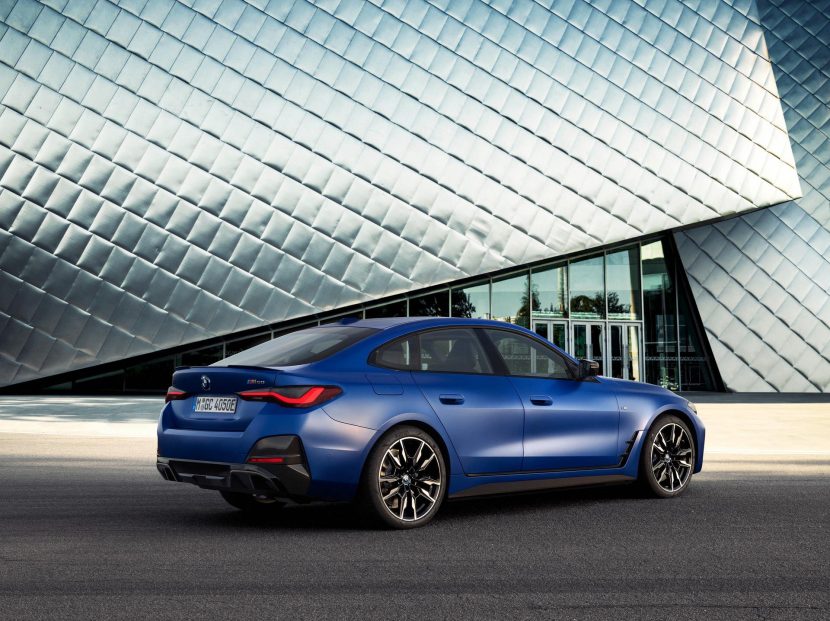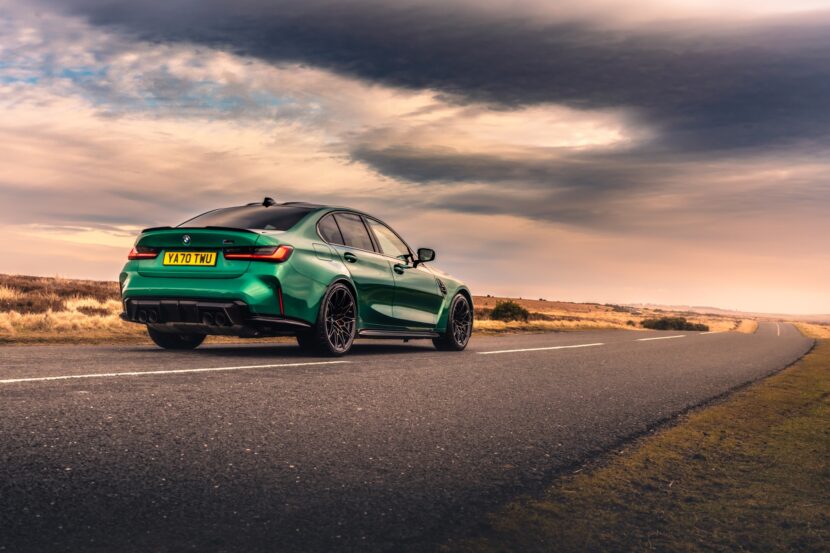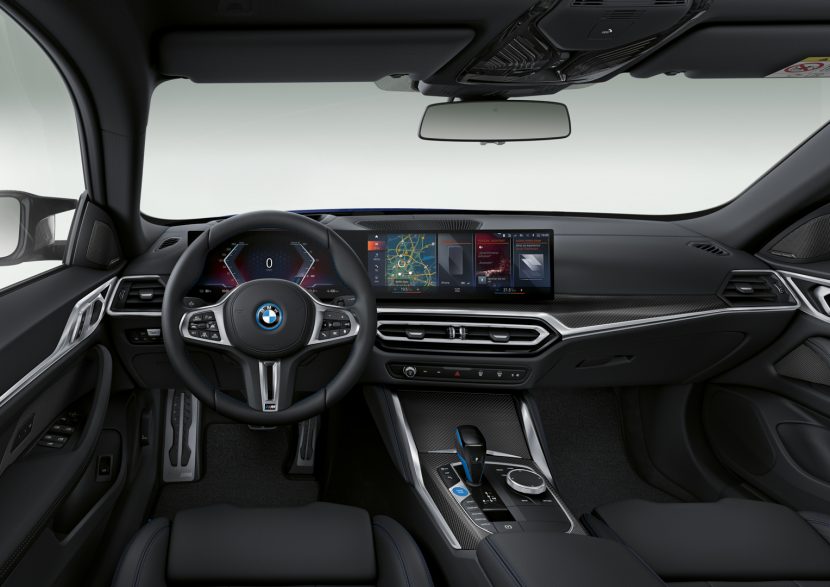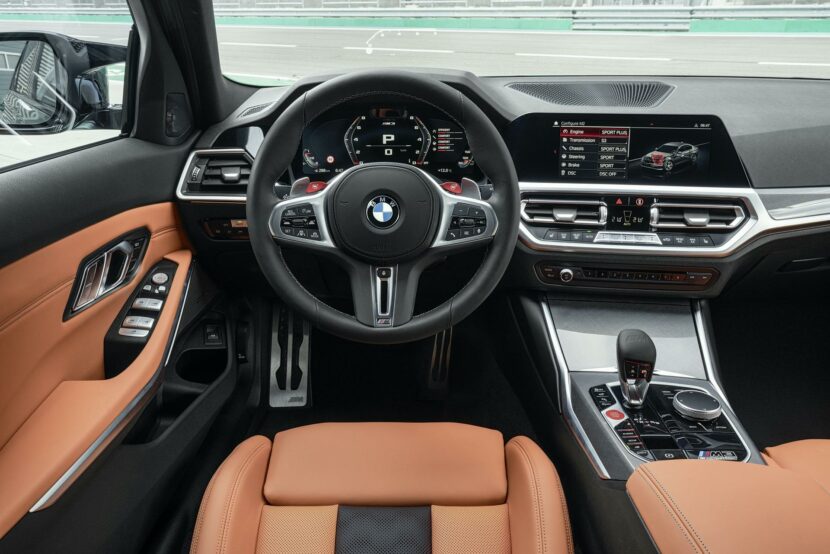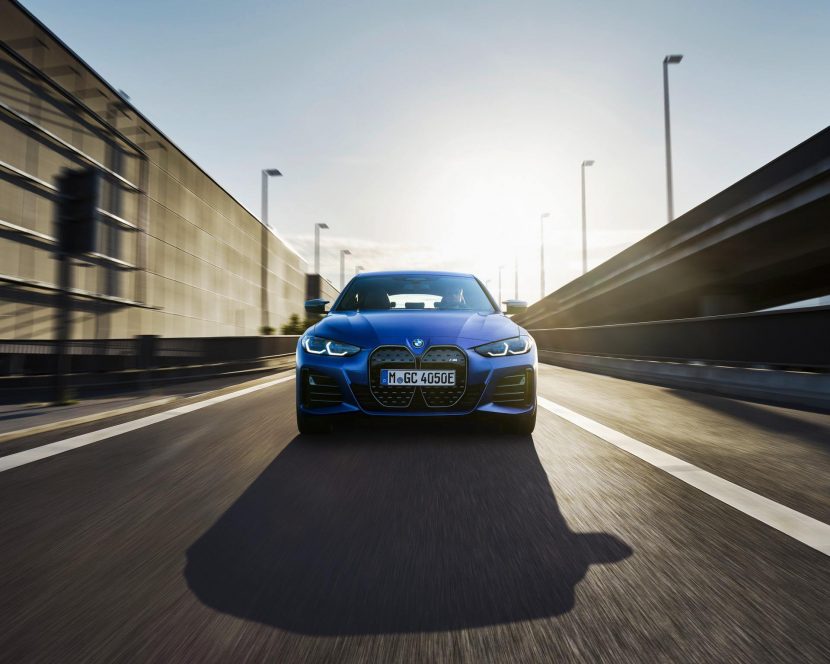These are strange times for BMW customers. Now, for the first time ever, the Bavarian brand offers two incredible powerful sport sedans for around the same price but with different powertrains: the BMW M3 Competition and BMW i4 M50. When customers head into BMW showrooms, they’re going to be able to cross-shop those two cars and will genuinely have a difficult decision to make. So let’s take a look at which to buy.
Let me preface this by saying that typical M3 customers won’t cross-shop the i4 M50 and typical EV buyers won’t cross-shop the M3 Competition. However, they both should. True car enthusiasts go into any purchase with an open mind and any open-minded enthusiasts will look at the fact that both cars are priced incredibly similarly, have very similar power figures, similar performance metrics, the same amount of doors and seats, closer overall ranges than you might think, and handling dynamics that aren’t too far off each other’s. So while customers likely won’t cross-shop the two, they absolutely should.
Power and Performance
First up is the last of the old guard, the M3 Comp. Without hyperbole, the BMW M3 Competition is one of the very best M cars ever made. Forget its heinous looks, it drives with a precision that few other M cars in history have ever had. In fact, there may never have been an M car before it with such incredible precision. Even the glorious M2 CS (which is admittedly more fun) can’t attack corners like the new M3 Comp. It’s a brilliant thing.
Under the hood lies a fantastic 3.0 liter twin-turbo I6 with 503 horsepower and 479 lb-ft of torque. It’s paired with an eight-speed auto and sends power to just the rear wheels. According to BMW, 0-60 mph happens in 3.8 seconds, but its probably a few tenths quicker than that. It’s monstrously quick, in any gear, at any rpm. Its eight-speed auto also shifts rapidly and smoothly, making it a joy to use. The exhaust noise isn’t brilliant, though, it’s only just okay.
Where as the BMW i4 M50 is an all-electric, all-wheel drive monster. It uses two electric motors, powered by an 81.5 kWh battery pack, to make 536 horsepower and 586 lb-ft of torque. It’s quite a bit heavier than the M3 Competition, so BMW claims a 0-60 mph time of 3.9 seconds, which is a tenth slower than the M3, despite being more powerful and all-wheel drive. However, when Horatiu drove the i4 M50, he reckoned it was faster than the M3.
Also, due to its all-wheel drive grip, it’s even more tenacious through corners and usable in bad weather. So while the M3 might be a bit quicker in tighter corners, due to less weight and rear-wheel drive (for now), the BMW i4 M50 is going to be just as fast in most real-world situations.
Winner: M3 Comp — They’re both just as fast but the M3 will be the more engaging sports car.
Range and Charging/Refueling
The main argument against the BMW i4 M50 will be its range. With only around 245 miles of range, the i4 M50 can’t drive as far as many internal combustion engine cars on a single charge. However, the BMW M3 Competition isn’t exactly a long-distance cruiser, either. It guzzles gas like an ’80s Bronco and will struggle to get 300 miles out of a tank. Plus, fuel is expensive and I spent more money than I’d have liked to on fuel during my week with it.
While the BMW i4 M50 doesn’t exactly have the best range, it’s still far more than enough. Few people drive 245 miles in a single day on a regular basis. Plus, it can charge at 200 kW, so it will recharge rather quickly. That said, it will never charge as quickly as the M3 Competition can refuel. Just a few minutes and the M3’s empty tank is full again and ready to roll. At best, you’re looking at forty minutes for the i4 M50.
Winner: Tie — the i4 M50 is cheaper to charge and can be charged at home but the M3 can be refueled much quicker, anywhere.
Looks, Interior, and Practicality
Both the BMW M3 Competition and BMW i4 M50 share a similar grille design, though it’s been made more aggressive for the M3. Plus, the M3’s is actually a functional grille, whereas the i4 M50’s is just a plastic panel that houses certain sensors.
The i4’s overall shape and design are a bit more attractive, as the M3 really doesn’t look like a proper M car from any angle. Its flared wheel arches are cool but it lacks any sort of real M3 design cue; overly sized kidney grilles, horizontal grille slats, no Hofmeister kink, and taillights that could be from a Lexus. The i4 M50 isn’t exactly a classic BMW, either, but its “Gran Coupe” design actually does feel more like a BMW than the M3’s design. After all, BMW is the brand that invented that very design language.
The i4 M50 is also more practical. Its hatchback trunk provides more luggage space and easier loading of said luggage. That said, both cars have very similar looking interiors, aside from the luggage space. The BMW M3 gets cooler seat options but the i4 M50 has better technology.
Winner: BMW i4 M50 — Its Gran Coupe design is sexier than the M3’s shape, it’s far more practical, and has better tech.
Price
While BMW may be late to the game, in terms of actually developing an EV like the i4 M50, it came ready to fight with an incredibly attractive price tag. The BMW i4 M50 starts at just over $65,000, which makes it around $7,000 cheaper than the M3 Competition. Which means you can get an i4 M50 with a few really nice options for less than the $72,800 starting price of the M3 Comp. Despite being cheaper, the BMW i4 M50 has more power, a lot more torque, all-wheel drive, more practicality, and better interior technology.
Winner: BMW i4 M50 — It’s not only cheaper, it’s more powerful, all-wheel drive, more high-tech, and comes with big tax incentives.





